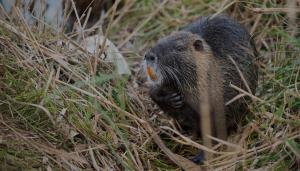
Grants
Habitat & Biodiversity Protection
Survey: Investigating the larger mammals of Corfu’s waterways
A team of three researchers, Bo Stille, Marie Stille, and Giannis Gasteratos, who have been studying the fauna of Corfu for many years, are conducting a one-year survey of the larger mammals present on the island. Different habitats all over Corfu are being surveyed, including three of the island’s Natura 2000 sites. A special interest is taken in the wetlands including rivers, lakes, ponds, freshwater wetlands, saltpans, and lagoons as these regions are important feeding as well as breeding grounds for several of the species studied. The results from the study will form the basis for recommendations that will be put forward for the management of protected areas, and the protection of the species studied. The results will also be used to address any threats that may harm individual species and/or their habitats. Emphasis will be placed on invasive and introduced species, as they pose a threat to the environment in general and to many of the native species in particular.
Native species included in the study are Eurasian otter (Lutra lutra), Red Fox (Vulpes vulpes), Beech Marten (Martes foina), Northern White-breasted Hedgehog (Erinaceus roumanicus), European Hare (Lepus europeus), and to some extent the Least Weasel (Mustela nivalis). With respect to invasive species emphasis will be put on the distribution of the Coypu (Myocastor coypus) but the aim is also to find out if the Racoon (Procyon lotor) and the Porcupine (Hystrix indica) are present and spreading. There are sporadic reports of both species in recent years.
Background
Very little is known about the distribution of the mammals present on Corfu today, and many of their habitats are diminishing or becoming fragmented. The waterways and wetlands of Corfu are of critical importance for a variety of species, from reptiles, otters, amphibians and fish to dragonflies and crustaceans. Whereas we have a fairly good view of the situation for reptiles, amphibians, and dragonflies, very little is known with respect to the mammals inhabiting aquatic habitats. Common threats range from human expansion and habitat destruction, to extensive water out-take and pollution, but also through to the effects of invasive species. In this context, the two most problematic species, both associated with wetlands, are the widespread Coypu (Myocastor coypus) and the Racoon (Procyon lotor), a species that recently has been reported from the island. Another introduced species reported in the last few years is a porcupine, probably the Indian Porcupine (Hystrix indica).
Objectives
The primary goal of this project is to gather information as to the present status of these species, information to be used as guidelines for future actions. A number of sites will be surveyed over the course of one year. As to the indigenous species, it will enable future steps to secure, through present legislation and information, these species and their habitats. As to the introduced non-native species, actual and potential damage caused by them can be estimated, and the data used for a removal management plan. The project will also be able to report on habitat problems. The combined impact of these results will, if relevant measures are taken, lead to better understanding and protection of the natural resources of Corfu. The results will be presented as a project report and submitted for publication in a relevant scientific journal.
